Have you ever pondered the complexities behind cosmetic industry regulations? Fret not!
With a dynamic and vast experience in the world of beauty and wellness, I’ve navigated these intricate regulatory waters firsthand. Trust me; understanding them is essential for your brand’s success.
The cosmetic industry regulations aren’t just red tape—they ensure products are safe, effective, and meet the highest standards.
In this guide, we’ll delve deep into the nuances of these regulations, from ingredient assessment to labeling requirements, ensuring your brand stays compliant and thrives.
So keep reading to learn more.
1. Overview of Cosmetic Regulations
Cosmetic regulations serve as a safeguard, ensuring that products on the market are safe for consumers while maintaining a standard of quality. They encompass a range of rules, from ingredient restrictions to marketing claims and labeling requirements. Having worked closely with these guidelines, I can vouch for their significance in shaping a brand’s credibility and trustworthiness.
The objective of these regulations is not just consumer protection but also creating a level playing field for brands. It ensures that companies prioritize product safety and efficacy above all, fostering innovation within defined boundaries. From my experience, understanding and adhering to these regulations is not just a compliance task but an essential foundation for long-term success in the cosmetic industry.
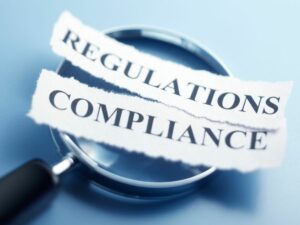
2. The Importance of Regulations in the Cosmetic Industry
In the cosmetics realm, it’s vital to both innovate and adhere to industry standards. Regulations are crucial for building consumer trust, ensuring quality, and avoiding health risks. To give a clearer perspective on their significance, below are the key areas that highlight their importance:
- Consumer Safety: Ensuring that products are safe for use, free from harmful ingredients, and tested rigorously. Having tried countless products myself, I know the peace of mind that comes with safety assurances.

- Quality Assurance: Setting a benchmark for product consistency and quality that every brand must meet. This not only uplifts the industry standard but also ensures consumers can rely on any product they choose.

- Innovation within Boundaries: While fostering creativity, regulations ensure that new products or ingredients don’t compromise consumer health. It’s a balance that pushes brands to innovate while prioritizing well-being and safety.
- Transparent Marketing: Keeping brands honest in their claims, preventing misleading advertisements, and ensuring consumers get what’s promised. From my journey in this industry, authenticity truly resonates.
3. Types of Cosmetics Subject to Regulation
The cosmetic industry is vast, catering to various needs and desires of consumers. With the myriad of products available, regulators have categorized them to ensure each adheres to specific safety and quality standards. For clarity, below are the primary categories of cosmetics that fall under stringent regulations:
Skincare Products
Encompassing everything from moisturizers to serums, ensuring they’re gentle yet effective. Skincare regulations prioritize both efficacy and skin compatibility, guaranteeing products that not only deliver results but also maintain the skin’s integrity. With the skin being our largest organ, it’s paramount that what we apply respects its delicate balance.

Makeup
From foundations to eyeliners, every hue and texture is scrutinized for safety. Given the direct application to sensitive areas like eyes and lips, regulators pay special attention to makeup formulations. Having tested countless makeup products, I truly value this diligence. This ensures that vibrant colors and lasting wear don’t pose risks to the user.
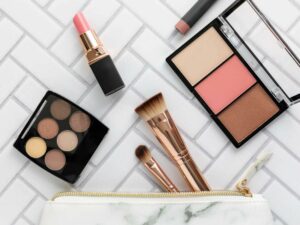
Haircare
Products that ensure lustrous locks without compromising health. Beyond just beautification, haircare regulations ensure that products don’t strip the hair of its natural oils or damage the scalp. Having tried numerous hair products over the years, I understand the importance of this trust. With varying hair types and concerns, it’s crucial that each product aligns with the promise it delivers.
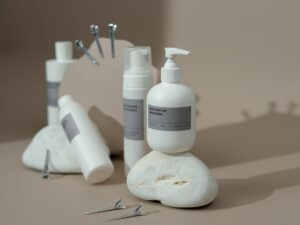
Fragrances and Perfumes
Ensuring captivating scents don’t come at the expense of skin compatibility. The world of fragrances is vast and enchanting, but the chemicals that create those bewitching scents are closely regulated. For example, certain musks or aldehydes, often used for their long-lasting aroma, are monitored for their concentrations to avoid skin irritations. This ensures that perfumes enchant without causing adverse reactions to the skin.

4. Different Types of Cosmetic Regulations
The cosmetic industry doesn’t operate on a one-size-fits-all regulatory framework. Instead, it’s governed by multiple dimensions of regulations, each catering to different facets of product development and distribution. To shed light on this multifaceted regulatory structure, below are the primary pillars of cosmetic regulations:
Ingredient Safety
Ensuring that the components of products are safe for human use. This involves rigorous testing of each ingredient for potential irritants or allergens. It’s not just about immediate reactions, but also the long-term effects of consistent use on the skin and body. At Nako Cosmetic, their commitment goes beyond the basics, always prioritizing the holistic well-being of their consumers.

Product Labeling
Standards for representing product information transparently and accurately to consumers are paramount. According to Century Label, product labeling presents essential details on packaging, beyond just the brand and product name, to guide customers’ buying decisions. This insight reinforces the idea that labels help consumers make informed choices, understanding both the benefits and potential risks.
Animal Testing Policies
Guidelines surrounding the ethical treatment of animals in product testing touch upon a brand’s responsibility to ensure cruelty-free practices. It’s a reflection of a company’s values and its commitment to humane product development. As an avid animal lover, this aspect holds a special place in my heart. Ensuring the well-being of our furry friends while promoting ethical beauty is a cause everyone should champion.
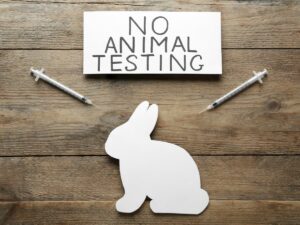
Environmental Impact
Considerations and rules about the ecological footprint of products and their ingredients delve deep into the production, distribution, and disposal stages. It’s not only about compliance but actively seeking ways to reduce environmental degradation. By focusing on sustainability, brands can leave a legacy of responsibility and care for future generations.
Good Manufacturing Practices
Protocols that champion the sanitary and consistent production of cosmetics ensure that every batch of a product is crafted with precision and meets rigorous quality and safety standards. Beyond maintaining consistency, these practices are integral to upholding a brand’s reputation in the market. A commitment to these standards translates to trustworthiness and consumer confidence.

5. Key Regulatory Agencies
Key regulatory agencies shape the global cosmetic industry, each with distinct guidelines ensuring product safety and efficacy for consumers. Below are the major agencies responsible for maintaining industry standards:
U.S. Food and Drug Administration (FDA)
Overseeing cosmetic regulations and standards within the United States, the Food and Drug Administration (FDA) plays a pivotal role in ensuring that products entering the U.S. market meet stringent safety and efficacy benchmarks. The FDA sets the U.S. standard for product quality and consumer safety. Having personally navigated the FDA’s guidelines, I can attest to their thoroughness and dedication to public safety.

European Medicines Agency (EMA)
As the agency responsible for supervising cosmetics and medicinal products in Europe, the European Medicines Agency maintains a comprehensive set of guidelines that reflect Europe’s commitment to product safety and innovation. The EMA’s framework prioritizes product safety and promotes industry advancement. Having interacted with European brands, I’ve always admired their strict adherence to EMA guidelines.
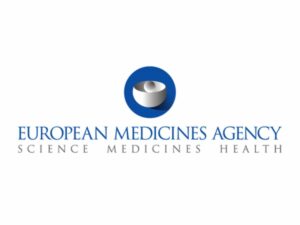
Asia-Pacific Regulations
Navigating the complex mesh of regulations in the Asia-Pacific region requires an understanding of the diverse markets and cultures that it encompasses. These regulations reflect a balance between global standards and local cultural preferences, ensuring that products cater to the unique needs and expectations of consumers across different countries.
6. Compliance Procedures and Documentation
In the cosmetic industry, compliance and documentation reflect a brand’s dedication to quality and safety. Meticulous record-keeping is pivotal, as it directly influences a product’s market success. Below are the key components that form the backbone of compliance and documentation in the cosmetic world:
- Product Testing Procedures: Standardized tests to gauge the safety and effectiveness of products. Having seen these tests firsthand, I can vouch for their thoroughness in ensuring consumer well-being.
- Ingredient Listings: Detailed documentation of every component used in a product. This transparency allows consumers to be fully aware of what they’re applying, fostering trust and informed choices.
- Safety Data Sheets: Comprehensive information regarding the safe handling and potential risks of cosmetics. Having delved deep into these sheets myself, their importance in ensuring user safety can’t be overstated.
- Claims Substantiation: Evidence and data supporting the claims made by the product. Brands are held accountable for their promises, ensuring that marketing meets reality.
- Audit Trails: Records of every step in the product’s manufacturing and distribution process. Such thorough tracking safeguards the product’s integrity from inception to the consumer’s hands.
| Component |
Description |
Additional Information |
| Product Testing Procedures |
Standardized tests to assess the safety and effectiveness of products. |
Ensures consumer well-being through rigorous testing. |
| Ingredient Listings |
Documentation of every component used in a product. |
Fosters trust and allows consumers to make informed choices. |
| Safety Data Sheets |
Information on the safe handling and potential risks of cosmetics. |
Crucial for ensuring user safety and proper handling. |
| Claims Substantiation |
Evidence supporting the product’s claims. |
Holds brands accountable, ensuring marketing aligns with reality. |
| Audit Trails |
Records of every step in the product’s manufacturing and distribution. |
Safeguards product integrity throughout its lifecycle. |
7. Ethical and Social Considerations
The cosmetic industry requires brands to merge regulations with ethical and social values. These considerations define a brand’s identity and its bond with consumers and the community. Below are the key areas that delve deeper into these considerations, illuminating the broader responsibilities of cosmetic brands:
Ethical Sourcing of Ingredients
This pertains to the acquisition of raw materials in a manner that respects both the environment and the people involved in its harvesting. Ethical sourcing ensures that ingredients are obtained without causing harm, exploitation, or environmental degradation. Knowing the origin of the ingredients gives me peace of mind about the products I use and support.
Cruelty-Free Practices
A commitment to cruelty-free practices signifies that a brand refrains from testing its products on animals at any stage of product development. This stance meets the rising consumer demand for cruelty-free products. In fact, according to Color Science, supporting cruelty-free skincare brands is a powerful way to push the industry toward a more ethical and environmentally responsible future.
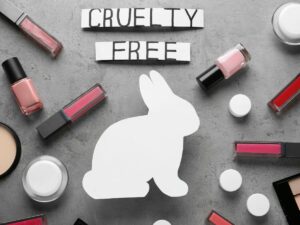
Sustainability and Environmental Responsibility
Brands, including Nako Cosmetic, are making strides in adopting greener practices, from reducing their carbon footprint to using eco-friendly packaging and sustainable ingredients. A genuine commitment to sustainability means considering the long-term environmental impact of every business decision, ensuring a healthier planet for future generations.
Social Responsibility and Community Engagement
Beyond producing quality products, brands have a pivotal role in uplifting and giving back to the communities they operate in. This responsibility transcends mere business operations, embedding a brand within the fabric of society. Through charitable initiatives, community outreach, or even supporting local artisans, brands can create lasting impacts, fostering goodwill and creating a ripple effect of positive change.
Fair Trade and Employee Welfare
This involves ensuring that every individual in the supply chain, from farmers to factory workers, is treated fairly, paid adequately, and works in safe conditions. Having seen the impact of fair trade, it’s truly transformative for communities. A commitment to fair trade also ensures that products are made under ethical conditions, fostering a positive brand image.
8. 5 Factors to Consider When Navigating Cosmetic Regulations
Understanding cosmetic regulations means grasping their implications for both brands and consumers. As the industry evolves, in-depth knowledge and foresight are crucial. Below are the critical factors that brands should take into account when wading through the intricate world of cosmetic regulations:
#1 Geographical Differences in Regulations
Different regions have distinct regulations based on their cultural, societal, and health perspectives. For instance, what might be permissible in one country might be prohibited in another due to varying cultural values or health concerns. Brands aiming for a global presence need to tailor their products according to each market’s specifications.
#2 Ingredients and Their Restrictions
Not all ingredients are accepted globally, and some may have usage limits. For example, certain substances allowed in one region might be considered harmful in another. Thus, thorough research and understanding of ingredient lists are pivotal for brands targeting multiple markets.

#3 Claims and Their Validation
Any claims made about a product must be backed by credible evidence. It’s not enough to simply state benefits; brands must possess solid data or studies that substantiate their claims. In an era of informed consumers, failing to provide valid evidence can lead to mistrust and potential legal repercussions.
#4 Packaging and Labeling Standards
These should align with the specific guidelines of the region where the product is sold. Packaging is not just about aesthetics; it’s also about communicating essential information in a compliant manner. Incorrect or misleading labels can result in hefty fines and tarnished brand reputation.

#5 Ongoing Regulatory Updates
As scientific research evolves, so do regulations, necessitating brands to stay updated. It’s essential for companies to continually monitor and adapt to these changes, ensuring they remain compliant. Proactive adaptation to regulatory shifts can save brands from potential pitfalls and maintain consumer trust.
Dive Deeper Into Our Resources
For some insightful reads, we’ve curated a list of recommended articles just for you:
Still haven’t found what you’re looking for? Don’t hesitate to contact us. We’re available around the clock to assist you.
Conclusion
Navigating the intricacies of cosmetic regulations can be daunting, but this comprehensive guide aims to shed light on the critical aspects every brand should be aware of. Understanding these facets not only ensures compliance but also fortifies a brand’s reputation and trustworthiness.
Discover how Nako Cosmetic remains at the forefront of ethical and compliant cosmetic production. For more insights or partnership inquiries, dive deeper with us. Contact us today to learn more.














